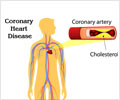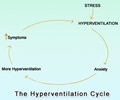Despite major advances, differences in the treatment given to male and female patients suffering from heart-related problems persist, a new study has found.
In all, the study shows, women were less likely than men to benefit from hospitals' quality-improvement measures -- and were less likely to get all of the drugs, tests, and counseling about smoking, diet and exercise that have been proven to help heart attack survivors live longer and healthier lives.The difference may help explain why women in the study were much more likely than men to die within a year of being hospitalized for a heart attack.
The result, published in a recent issue of the Archives of Internal Medicine, comes from an analysis of records from nearly 4,000 heart attack survivors treated at 33 Michigan hospitals before or after a major quality improvement effort took place. All were insured under Medicare.
The researchers, led by a team from the University of Michigan Cardiovascular Center and funded by the American College of Cardiology, found a significant difference between the treatment women received before and after the effort, and that received by men. But the increased use of most medications and other measures was much more pronounced in men.
Overall, both men and women treated in the four months after the quality effort began had a better chance of being alive a year after their hospital stay ended, compared with those treated before the quality-improvement effort. But the drop in death risk was smaller in women.
That difference, say the researchers, is linked to the fact that women patients were less likely than men to have a one-on-one session with doctors or nurses before they went home from the hospital, to help them understand and "take charge" of the medicines and lifestyle changes that could improve their health. Both men and women who had this session, and signed a discharge contract with their doctors and nurses that included a pledge to stick to treatment and follow-up appointments, had a 54 percent lower risk of dying within a year than those who didn't.
Advertisement
While the reasons behind the persistent differences are unclear, Eagle and his colleagues speculate that it may have something to do with the fact that women heart attack patients tend to be older, and as a result doctors may not feel that women patients can derive as much benefit from post-heart attack treatments and lifestyle changes.
Advertisement
Previously, Eagle and his colleagues have shown that GAP reduced patients' risk of dying within a year of leaving the hospital by 25 percent, if doctors and nurses followed standard national guidelines for their care, and used the discharge tool and contract. This major effect on mortality rates was the first evidence that standardized heart care saves lives.
GAP tries to increase hospitals' use of aspirin and beta blocker drugs, and cholesterol testing, within 24 hours of a heart attack, and the prescribing of aspirin, beta blockers, cholesterol-lowering drugs and ACE inhibitor drugs for patients leaving the hospital. It also seeks to increase the number of patients who get counseling about diet and smoking before they leave the hospital, and sign a contract with their doctor or nurse pledging to follow recommendations and stick to their medicines.
On the whole, men treated after the quality effort began were more likely to receive pre-discharge prescriptions for all four classes of recommended heart medications than were women. The quality effort significantly improved the use of only two of the drugs – beta blockers and aspirin -- in women.
The new analysis showing differences in the delivery of care to women and men, even after the quality improvement effort, raises an important question of how hospitals implement quality measures.
Some previous studies by other researchers have found that doctors are less likely to deliver evidence-based medical care -- the foundation of quality improvement efforts like GAP – to women compared with men. But the new study is the first to show a correlation between this failure and mortality. "We owe women heart attack patients a full examination of the factors that might lead them to receive fewer of the proven drugs and lifestyle tips than men receive," says Eagle. "Now that we know that they get just as much mortality benefit as men when quality standards are applied to their care, we must find ways to ensure that they are all treated according to those standards."











